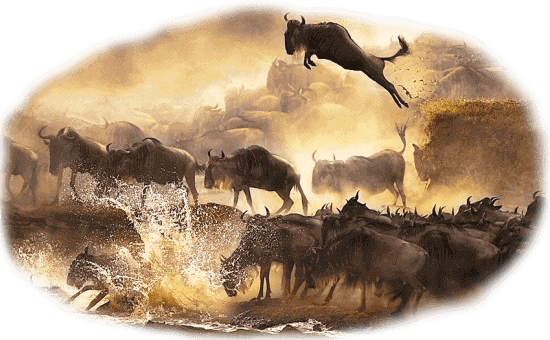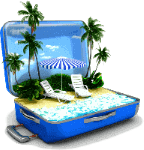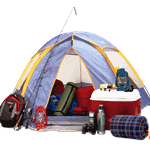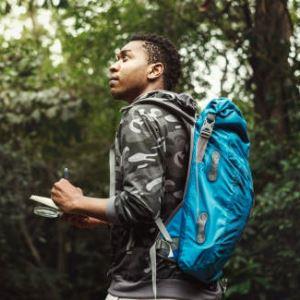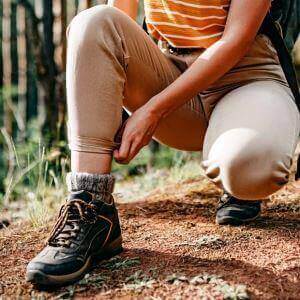 Kenya is a dream destination for nature-loving Belgians looking to explore the wild heart of Africa. With its iconic national parks and idyllic beaches, the country offers a perfect balance of adventure and relaxation. This guide is designed to help Belgian tourists make the most of their journey by highlighting the best attractions and travel tips for a smooth and memorable experience. Kenya’s national parks are among the most celebrated in the world. Masai Mara is perhaps the most famous, where Belgian travelers can witness the Great Migration or track the Big Five with expert guides. Amboseli National Park is another top destination, offering up-close views of elephants with Mount Kilimanjaro in the background. Lake Nakuru draws birdwatchers from Belgium and beyond, especially for its flamingo population. Meanwhile, Tsavo East and West are vast and untamed, ideal for those seeking a more off-the-beaten-path safari. Beyond the savannah, Kenya’s coastline beckons with turquoise waters and white sandy beaches. Belgian beach lovers can unwind at Diani Beach, a favorite for its luxury resorts and wide range of water activities. Watamu is a hotspot for marine life, making it perfect for snorkeling and diving, while the ancient town of Lamu offers a blend of culture and coastal charm. Whether you're relaxing by the Indian Ocean or sailing on a traditional dhow, Kenya’s beaches provide the ultimate tropical escape. To prepare for a successful trip, Belgians should pay attention to a few key travel details. First, a valid passport and a tourist visa are required for entry into Kenya. Some vaccinations, including yellow fever, are mandatory depending on your travel history. It's also essential to have travel insurance and take precautions against malaria, especially if you're visiting inland parks. The dry seasons June to October and January to February are the best times for wildlife viewing, while the coast is enjoyable all year. Packing smart is crucial for both safari and seaside adventures. Lightweight clothing, a good hat, sunscreen, insect repellent, and sturdy walking shoes are must-haves. Don’t forget your camera and binoculars for safari moments, as well as beachwear and reef-safe sunscreen for coastal days. Bringing a travel adapter and keeping digital and printed copies of important documents is also wise. For those planning a nature- and culture-rich holiday, this Kenya travel guide for Belgian tourists offers everything needed to enjoy the best of both worlds wildlife and waves. Whether you're a first-time traveler or a seasoned adventurer, Kenya provides an unmatched experience. Belgian tourists can immerse themselves in thrilling safari excursions by day and enjoy relaxing beach strolls by evening. The diversity of landscapes and ecosystems in Kenya is truly stunning, ranging from the golden savannahs of Masai Mara to the coral reefs of Watamu. The ease of travel between parks and coastlines means you can design a personalized itinerary that captures both adrenaline and tranquility. For those interested in culture, Kenya also offers warm hospitality, vibrant traditions, and culinary delights rooted in local heritage. From sipping freshly brewed Kenyan coffee while watching elephants roam the plains to enjoying a seafood dinner under swaying palms, the experiences are as diverse as they are unforgettable. Kenya welcomes Belgians with open arms and promises a journey full of stories worth sharing. So pack your bags, embrace the adventure, and prepare for a trip that beautifully balances exploration and relaxation.
Kenya is a dream destination for nature-loving Belgians looking to explore the wild heart of Africa. With its iconic national parks and idyllic beaches, the country offers a perfect balance of adventure and relaxation. This guide is designed to help Belgian tourists make the most of their journey by highlighting the best attractions and travel tips for a smooth and memorable experience. Kenya’s national parks are among the most celebrated in the world. Masai Mara is perhaps the most famous, where Belgian travelers can witness the Great Migration or track the Big Five with expert guides. Amboseli National Park is another top destination, offering up-close views of elephants with Mount Kilimanjaro in the background. Lake Nakuru draws birdwatchers from Belgium and beyond, especially for its flamingo population. Meanwhile, Tsavo East and West are vast and untamed, ideal for those seeking a more off-the-beaten-path safari. Beyond the savannah, Kenya’s coastline beckons with turquoise waters and white sandy beaches. Belgian beach lovers can unwind at Diani Beach, a favorite for its luxury resorts and wide range of water activities. Watamu is a hotspot for marine life, making it perfect for snorkeling and diving, while the ancient town of Lamu offers a blend of culture and coastal charm. Whether you're relaxing by the Indian Ocean or sailing on a traditional dhow, Kenya’s beaches provide the ultimate tropical escape. To prepare for a successful trip, Belgians should pay attention to a few key travel details. First, a valid passport and a tourist visa are required for entry into Kenya. Some vaccinations, including yellow fever, are mandatory depending on your travel history. It's also essential to have travel insurance and take precautions against malaria, especially if you're visiting inland parks. The dry seasons June to October and January to February are the best times for wildlife viewing, while the coast is enjoyable all year. Packing smart is crucial for both safari and seaside adventures. Lightweight clothing, a good hat, sunscreen, insect repellent, and sturdy walking shoes are must-haves. Don’t forget your camera and binoculars for safari moments, as well as beachwear and reef-safe sunscreen for coastal days. Bringing a travel adapter and keeping digital and printed copies of important documents is also wise. For those planning a nature- and culture-rich holiday, this Kenya travel guide for Belgian tourists offers everything needed to enjoy the best of both worlds wildlife and waves. Whether you're a first-time traveler or a seasoned adventurer, Kenya provides an unmatched experience. Belgian tourists can immerse themselves in thrilling safari excursions by day and enjoy relaxing beach strolls by evening. The diversity of landscapes and ecosystems in Kenya is truly stunning, ranging from the golden savannahs of Masai Mara to the coral reefs of Watamu. The ease of travel between parks and coastlines means you can design a personalized itinerary that captures both adrenaline and tranquility. For those interested in culture, Kenya also offers warm hospitality, vibrant traditions, and culinary delights rooted in local heritage. From sipping freshly brewed Kenyan coffee while watching elephants roam the plains to enjoying a seafood dinner under swaying palms, the experiences are as diverse as they are unforgettable. Kenya welcomes Belgians with open arms and promises a journey full of stories worth sharing. So pack your bags, embrace the adventure, and prepare for a trip that beautifully balances exploration and relaxation.
Kenya Nature & Beach Travel Highlights for Belgian Visitors
| Feature | National Parks | Beaches |
|---|---|---|
| Best Time to Visit | June to October, January to February | Year-round |
| Top Locations | Masai Mara, Amboseli, Tsavo, Lake Nakuru | Diani, Watamu, Lamu |
| Popular Activities | Safari drives, birdwatching, photography | Swimming, snorkeling, cultural tours |
| Languages Spoken by Guides | English, French | English, French |
| Recommended for Belgian Tourists | Yes | Yes |
| Nearby Accommodations | Safari lodges, eco-camps | Beach resorts, guesthouses |
Best National Parks in Kenya for Belgian Safari Enthusiasts
Kenya's national parks are some of the most breathtaking and biodiverse in the world, offering Belgian tourists an unforgettable safari adventure. The crown jewel of Kenya's wildlife tourism is undoubtedly the Masai Mara National Reserve. Known for the awe-inspiring Great Migration, this reserve provides the chance to see vast herds of wildebeest and zebra cross the Mara River, often pursued by crocodiles and big cats. For Belgian visitors, the experience is both dramatic and educational, with French- and English-speaking guides enhancing the journey. Amboseli National Park is another must-see destination, especially famous for its large elephant herds and its stunning views of Mount Kilimanjaro, Africa's tallest peak. The photographic opportunities here are unparalleled. Belgian travelers who appreciate wildlife photography will find Amboseli incredibly rewarding, especially in the dry season when animals gather at water sources. For bird enthusiasts, Lake Nakuru National Park offers a vibrant spectacle of flamingos that gather in massive numbers along the shoreline. This alkaline lake also supports a diverse array of other bird species and is a sanctuary for endangered rhinos. It's an excellent destination for Belgian travelers seeking a more tranquil, scenic park. Tsavo East and Tsavo West, Kenya's largest national parks, are ideal for Belgian tourists looking for raw, untamed wilderness. Tsavo is less crowded than other parks and offers an authentic safari atmosphere. Here, you can see red elephants, lions, and leopards amid baobab-dotted landscapes. The diversity of terrain from volcanic hills to riverine forests adds to the magic. Belgian travelers will appreciate the well-developed tourism infrastructure in these parks. Accommodations range from luxurious lodges with modern amenities to eco-friendly tented camps that provide a more immersive experience. Many safari providers cater to international guests, including Belgians, and offer tailored packages that include transport, game drives, meals, and expert guides. One of the benefits for Belgians is the ease of communication. Many guides and staff speak English and French, ensuring that visitors can fully understand wildlife briefings, conservation efforts, and cultural insights. This makes the experience not only enjoyable but also educational. Kenya's national parks offer a once-in-a-lifetime opportunity for Belgians to connect with nature in its purest form. Whether tracking a pride of lions at dawn or listening to the haunting calls of hyenas under a starlit sky, every moment spent in the wild leaves a lasting impression. Belgian tourists are often struck by the raw beauty and serene power of the Kenyan wilderness. It's not just about spotting animals; it's about immersing oneself in the rhythm of the land, where each sunrise brings new encounters and every sunset tells a different story. For many Belgians, the thrill of seeing elephants roam freely or a cheetah sprint across the savannah evokes both wonder and respect for the natural world. It's a deeply moving experience, one that often sparks a newfound appreciation for conservation and sustainability. The authenticity of Kenya's parks, from their diverse ecosystems to their cultural significance, creates a holistic adventure that speaks to the curious spirit of the Belgian traveler. For any Belgian safari enthusiast, Kenya is not just a destination it's a deeply enriching adventure that stirs the soul, offering moments of awe, reflection, and profound connection with the earth.
Top Kenyan Wildlife Parks for Tourists Traveling from Belgium
Kenya is a land of striking contrasts and raw natural beauty, making it a top destination for Belgian tourists seeking authentic wildlife encounters. The country's vast national parks and reserves showcase an extraordinary range of ecosystems, from open savannahs and riverine forests to alkaline lakes and volcanic landscapes. These habitats are home to an impressive variety of species, including the famed Big Five lion, leopard, elephant, buffalo, and rhino as well as hundreds of bird species and unique flora. For Belgian nature lovers, Kenya provides the perfect opportunity to immerse in the wild, where thrilling animal sightings and scenic landscapes go hand in hand. From iconic safaris to scenic birdwatching, Kenya has something to offer every nature enthusiast. Here's a closer look at the best parks and what they uniquely offer.
- Masai Mara National Reserve: One of Africa's most iconic wildlife destinations, Masai Mara is famed for the annual Great Migration, where millions of wildebeest and zebras traverse the plains. Belgian tourists can witness dramatic predator-prey encounters, guided by experts fluent in French or English.
- Amboseli National Park: Situated near the Tanzanian border, Amboseli offers exceptional views of Mount Kilimanjaro and up-close encounters with large elephant herds. Photographers from Belgium will find this park especially rewarding for its sweeping landscapes and wildlife density.
- Lake Nakuru National Park: Known for its vibrant flamingo flocks, Lake Nakuru is a birdwatcher's paradise. It also serves as a rhino sanctuary and offers serene game drives through forested and lakeside terrain.
- Tsavo East and West National Parks: These are Kenya's largest parks and provide a more rugged, off-the-beaten-path experience. Belgian tourists can enjoy diverse landscapes, red elephants, and fewer crowds for a more intimate connection with nature.
These parks together offer unmatched opportunities for wildlife viewing in Kenya for Belgian tourists. Whether you're tracking lions on the savannah or admiring birds along lake shores, each moment in Kenya's parks promises a lifetime of memories.
Coastal Getaways in Kenya Perfect for Belgian Beach Lovers
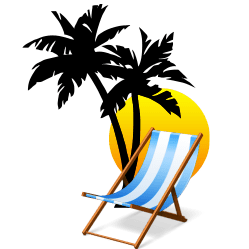 Kenya's Indian Ocean coastline is a sun-drenched paradise that offers Belgian travelers a serene escape after exhilarating safaris. The coastal region features some of Africa's most stunning beaches, where turquoise waters meet white sands under gently swaying palm trees. For those seeking both relaxation and cultural richness, Kenya's beaches are a perfect destination. Diani Beach, located south of Mombasa, is one of Kenya's most popular coastal spots. With its wide shoreline and calm waters, it's ideal for sunbathing, swimming, or indulging in water sports such as kite surfing and jet skiing. The area boasts luxurious beachfront resorts, charming guesthouses, and an array of beach bars and restaurants that serve fresh seafood and tropical cocktails. Watamu Beach, further north, is well-known for its marine biodiversity. The nearby Watamu Marine National Park is a protected area ideal for snorkeling and diving, giving Belgian visitors the chance to explore vibrant coral reefs teeming with tropical fish, sea turtles, and dolphins. The town also has a laid-back atmosphere with boutique lodges and eco-friendly resorts that emphasize sustainability. For those interested in culture and history, Lamu Island offers a unique experience. This UNESCO World Heritage Site blends Swahili, Arab, and Portuguese influences, seen in its narrow alleys, coral stone buildings, and centuries-old mosques. Lamu is car-free and accessible only by boat, giving it a timeless charm that captivates many Belgian tourists. Whether you're lounging on a secluded beach, enjoying a dhow cruise at sunset, or exploring a historic island, the coast of Kenya offers something for every taste. The region is accessible via domestic flights or road transfers from Nairobi, making it easy to add a coastal retreat to your Kenyan adventure. Kenya beach holidays for Belgian travelers combine natural beauty, cultural discovery, and warm hospitality. Along the Indian Ocean, the coastline boasts a blend of pristine beaches, vibrant marine ecosystems, and unique cultural heritage that makes every visit truly memorable. Diani Beach, Watamu, and Lamu each offer a distinct vibe, ranging from luxurious and activity-filled to peaceful and historic. Belgian tourists can start the day with yoga on the beach, explore coral reefs in the afternoon, and enjoy freshly grilled seafood by sunset. In places like Watamu and Malindi, eco-tourism is thriving, with marine parks and conservation efforts giving visitors a chance to interact responsibly with Kenya's underwater world. In contrast, Lamu Island captivates with its timeless charm, narrow streets, traditional dhow sails, and rich Swahili culture. Each coastal destination brings opportunities for relaxation and discovery. Belgian travelers will also appreciate the warm welcome of local communities, the rhythmic sounds of Taarab music, and the spice-laden coastal cuisine that highlights Kenya's diverse cultural tapestry. Whether seeking rest, exploration, or connection, the coast delivers. Each destination along Kenya's Indian Ocean shoreline has something unique to offer Belgian visitors. Diani’s lively beach scene invites travelers to indulge in watersports, local cuisine, and nightlife, while quieter stretches of sand are ideal for reflective morning walks and peaceful sunset views. In Watamu, nature lovers can immerse themselves in the vibrant marine life and enjoy guided eco-tours through the mangroves or offshore reefs. For history enthusiasts, Lamu offers a deep dive into Swahili culture, with its age-old architecture, call to prayer echoing through the town, and bustling local markets. Local hospitality also leaves a lasting impression. Belgian tourists often remark on the warmth and generosity of the Kenyan coastal communities. From the friendliness of hotel staff to the charm of local artisans, the interactions create a meaningful human connection. Whether enjoying a traditional Swahili meal or dancing to coastal rhythms, visitors are invited to become part of the local story. With such rich variety and heartfelt hospitality, Kenya's coastline guarantees an enriching experience that goes far beyond the beach. Belgian travelers return home not just with souvenirs, but with stories, friendships, and a longing to visit again.
Kenya's Indian Ocean coastline is a sun-drenched paradise that offers Belgian travelers a serene escape after exhilarating safaris. The coastal region features some of Africa's most stunning beaches, where turquoise waters meet white sands under gently swaying palm trees. For those seeking both relaxation and cultural richness, Kenya's beaches are a perfect destination. Diani Beach, located south of Mombasa, is one of Kenya's most popular coastal spots. With its wide shoreline and calm waters, it's ideal for sunbathing, swimming, or indulging in water sports such as kite surfing and jet skiing. The area boasts luxurious beachfront resorts, charming guesthouses, and an array of beach bars and restaurants that serve fresh seafood and tropical cocktails. Watamu Beach, further north, is well-known for its marine biodiversity. The nearby Watamu Marine National Park is a protected area ideal for snorkeling and diving, giving Belgian visitors the chance to explore vibrant coral reefs teeming with tropical fish, sea turtles, and dolphins. The town also has a laid-back atmosphere with boutique lodges and eco-friendly resorts that emphasize sustainability. For those interested in culture and history, Lamu Island offers a unique experience. This UNESCO World Heritage Site blends Swahili, Arab, and Portuguese influences, seen in its narrow alleys, coral stone buildings, and centuries-old mosques. Lamu is car-free and accessible only by boat, giving it a timeless charm that captivates many Belgian tourists. Whether you're lounging on a secluded beach, enjoying a dhow cruise at sunset, or exploring a historic island, the coast of Kenya offers something for every taste. The region is accessible via domestic flights or road transfers from Nairobi, making it easy to add a coastal retreat to your Kenyan adventure. Kenya beach holidays for Belgian travelers combine natural beauty, cultural discovery, and warm hospitality. Along the Indian Ocean, the coastline boasts a blend of pristine beaches, vibrant marine ecosystems, and unique cultural heritage that makes every visit truly memorable. Diani Beach, Watamu, and Lamu each offer a distinct vibe, ranging from luxurious and activity-filled to peaceful and historic. Belgian tourists can start the day with yoga on the beach, explore coral reefs in the afternoon, and enjoy freshly grilled seafood by sunset. In places like Watamu and Malindi, eco-tourism is thriving, with marine parks and conservation efforts giving visitors a chance to interact responsibly with Kenya's underwater world. In contrast, Lamu Island captivates with its timeless charm, narrow streets, traditional dhow sails, and rich Swahili culture. Each coastal destination brings opportunities for relaxation and discovery. Belgian travelers will also appreciate the warm welcome of local communities, the rhythmic sounds of Taarab music, and the spice-laden coastal cuisine that highlights Kenya's diverse cultural tapestry. Whether seeking rest, exploration, or connection, the coast delivers. Each destination along Kenya's Indian Ocean shoreline has something unique to offer Belgian visitors. Diani’s lively beach scene invites travelers to indulge in watersports, local cuisine, and nightlife, while quieter stretches of sand are ideal for reflective morning walks and peaceful sunset views. In Watamu, nature lovers can immerse themselves in the vibrant marine life and enjoy guided eco-tours through the mangroves or offshore reefs. For history enthusiasts, Lamu offers a deep dive into Swahili culture, with its age-old architecture, call to prayer echoing through the town, and bustling local markets. Local hospitality also leaves a lasting impression. Belgian tourists often remark on the warmth and generosity of the Kenyan coastal communities. From the friendliness of hotel staff to the charm of local artisans, the interactions create a meaningful human connection. Whether enjoying a traditional Swahili meal or dancing to coastal rhythms, visitors are invited to become part of the local story. With such rich variety and heartfelt hospitality, Kenya's coastline guarantees an enriching experience that goes far beyond the beach. Belgian travelers return home not just with souvenirs, but with stories, friendships, and a longing to visit again.
Popular Kenyan Beaches Ideal for Belgium Tourists Year-Round
Kenya's coastline offers a year-round tropical retreat, perfect for Belgian tourists seeking warmth, relaxation, and vibrant cultural experiences. Stretching along the Indian Ocean, the beaches are known for their powdery sands, swaying palms, and crystal-clear waters. Whether you're planning a winter escape from Belgium's colder months or a summer adventure, Kenya delivers consistent sunshine and inviting seas throughout the year. From active pursuits like kite-surfing and scuba diving to serene moments spent lounging under the sun or enjoying coastal Swahili cuisine, there’s something for every Belgian traveler. Kenya’s beach destinations blend natural beauty with cultural richness, ensuring a memorable escape in any season.
- Diani Beach: Known for its powdery white sands and crystal-clear waters, Diani Beach is perfect for both relaxation and adventure. Belgian tourists can swim, snorkel, kite-surf, or simply unwind under palm trees. Luxury resorts, beach bars, and local markets provide a lively atmosphere with plenty of dining and entertainment options.
- Watamu Beach: This coastal gem is a haven for marine life enthusiasts. Watamu Marine National Park offers excellent snorkeling and diving among coral reefs teeming with fish and sea turtles. The town itself is peaceful and eco-friendly, attracting Belgian travelers who appreciate sustainability and nature.
- Lamu Island: A UNESCO World Heritage Site, Lamu is steeped in Swahili culture and history. The island has no cars, giving it a unique charm. Belgian visitors can explore winding streets, traditional architecture, and vibrant markets while enjoying quiet beachfront lodges.
- Malindi: A mix of beach life and history, Malindi offers water sports, Italian-influenced cuisine, and access to ancient ruins like Gedi. It's ideal for Belgians who want both beach relaxation and cultural depth.
With its stunning variety of beaches, marine parks, and cultural landmarks, Kenya’s coastline welcomes Belgium tourists to enjoy sunshine, warm waters, and unforgettable coastal experiences every month of the year.
Travel Tips for Belgians Visiting Kenya’s Parks and Beaches
Kenya is a land of striking contrasts, offering Belgian tourists a rich blend of natural beauty, diverse wildlife, and idyllic coastal experiences. From the wide-open savannahs of the Maasai Mara to the white sandy beaches of Diani and Watamu, Kenya is an exceptional destination for those seeking adventure and relaxation. For Belgians planning a trip to this East African gem, a few well-considered travel tips can make all the difference in ensuring a safe, smooth, and enriching journey. One of the most important aspects to consider when traveling to Kenya is the timing of your visit. The best months for wildlife safaris are during the dry seasons, typically from June to October and from January to February. These periods offer excellent opportunities to witness the Great Migration in the Maasai Mara or spot the Big Five in Amboseli or Tsavo. For beach lovers, the Kenyan coast is most enjoyable from December to March, when the weather is sunny and warm. Before departure, Belgian tourists should ensure their travel documents are in order. A valid passport with at least six months’ validity and a tourist visa are required. Kenya offers an e-visa platform which is convenient and efficient. Travelers should consult their doctor about necessary vaccinations, including yellow fever and malaria prophylaxis, and carry an international certificate of vaccination. Packing smart is key to a comfortable trip. Light clothing is ideal for the warm Kenyan climate, but modest dress is advisable, especially when visiting rural areas or religious sites. Safari-goers should bring neutral-colored clothing, a wide-brimmed hat, insect repellent, sunscreen, and binoculars. Beachgoers will benefit from swimwear, sandals, and a good book for lounging by the Indian Ocean. Cultural sensitivity is essential when exploring Kenya. The country is home to more than 40 ethnic groups, each with its own traditions and customs. Respect local etiquette, ask before taking photos, and learn a few Swahili phrases like "Jambo" (hello) and "Asante" (thank you) to enhance interactions. Safety is generally not a concern in Kenya’s tourist areas, but Belgian travelers should remain aware of their surroundings, avoid isolated places after dark, and use reputable tour operators. It is also wise to avoid displaying expensive items and to use safes provided in hotels for valuables. Kenya’s currency is the Kenyan shilling, and it's advisable to carry some cash for small purchases, especially in rural or coastal areas. Credit cards are accepted in major hotels and restaurants, but mobile money platforms like M-Pesa are more commonly used by locals. Belgian travel tips for Kenya national parks and beaches revolve around preparation, cultural awareness, and practical safety. With the right planning, Belgian tourists can enjoy a memorable and enriching African adventure that captures the spirit and splendor of Kenya.
Useful Kenya Travel Advice for Belgium Citizens and Tourists
Planning a trip to Kenya involves more than just booking a flight and packing your bags. Belgian tourists should be aware of a few essential travel guidelines to ensure their experience is smooth, safe, and fulfilling. Kenya offers a mix of adventurous safaris and relaxing beach escapes, and being well-prepared enhances both. Start by ensuring your passport is valid for at least six months from the date of entry. Belgian citizens need a tourist visa to enter Kenya, which can be obtained online through Kenya's eVisa portal. It's advisable to apply well in advance to avoid last-minute issues. Vaccinations are another crucial consideration. Belgian travelers should consult a travel clinic several weeks before departure. Yellow fever vaccination is mandatory for travelers arriving from or transiting through countries where yellow fever is endemic. Hepatitis A, typhoid, and malaria prevention medications are also commonly recommended. Travel insurance is a must. Comprehensive coverage should include health care, medical evacuation, trip cancellation, and theft. Safaris often take place in remote regions, so having reliable insurance provides peace of mind. The best time to visit Kenya’s national parks is during the dry seasons, from June to October and January to February. These months offer excellent wildlife viewing conditions, especially in iconic parks like Masai Mara and Amboseli. Coastal destinations like Diani and Watamu are ideal year-round due to their stable tropical climate. Currency exchange can be done at major airports or hotels, but it's smart to carry some Kenyan shillings for small purchases and tips. Credit cards are accepted in larger establishments, though mobile money like M-Pesa is widely used and may be worth setting up for convenience. Lastly, respect for local customs and natural environments will enrich your travel experience. Dress modestly in villages and towns, ask permission before photographing people, and always follow park rules to protect wildlife and ecosystems. These travel tips for Belgians in Kenya national parks will help you enjoy your trip with confidence and cultural awareness. Whether you’re tracking elephants in the bush or relaxing by the sea, informed travel is key to an unforgettable Kenyan adventure.
What Belgian Travelers Should Pack for a Kenya Adventure
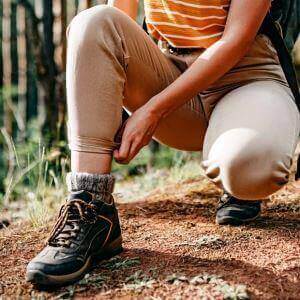 Packing correctly for a trip to Kenya is essential to ensure a smooth and enjoyable journey. Belgian tourists traveling to Kenya should prepare for varying climates, outdoor excursions, and cultural settings. Whether you’re heading on safari or lounging by the coast, smart and efficient packing will enhance your experience. Start with clothing. Lightweight, breathable clothes made of cotton or linen are perfect for the hot daytime temperatures. Neutral colors like beige, olive, and khaki are best for safaris as they blend with the environment and won’t attract insects. However, don’t forget to include a few warmer layers for early morning game drives, as temperatures can drop significantly in the parks. Footwear matters, too. A pair of sturdy walking shoes or boots is essential for nature walks and game drives, while open sandals or flip-flops are ideal for the beach. Add a wide-brimmed hat, polarized sunglasses, and high-SPF sunscreen to protect yourself from the equatorial sun. Health and hygiene essentials should include insect repellent with DEET, hand sanitizer, personal medications, and a compact first-aid kit. Belgian travelers should also bring a reusable water bottle and electrolyte tablets for hydration during long days outdoors. For beach days in Diani or Watamu, don’t forget your swimwear, a microfiber towel, and reef-safe sunscreen. If you enjoy snorkeling or diving, you may want to bring your own gear, although rentals are widely available. Electronics like a camera with zoom lens, binoculars for wildlife spotting, and a power bank will enhance your travel experience. Kenya uses UK-style plugs (type G), so a universal travel adapter is a must. Organize your travel documents carefully. Bring printed and digital copies of your passport, visa, travel insurance, yellow fever certificate, and booking confirmations. A secure travel wallet can help keep them safe. For those visiting during the rainy seasons (March–May and November), include a lightweight rain jacket and waterproof pouches for electronics. Quick-drying clothes are practical if you're traveling across regions. This detailed Kenya packing list for Belgian travelers covers all the essentials to ensure a comfortable, safe, and memorable adventure through one of Africa’s most diverse destinations.
Packing correctly for a trip to Kenya is essential to ensure a smooth and enjoyable journey. Belgian tourists traveling to Kenya should prepare for varying climates, outdoor excursions, and cultural settings. Whether you’re heading on safari or lounging by the coast, smart and efficient packing will enhance your experience. Start with clothing. Lightweight, breathable clothes made of cotton or linen are perfect for the hot daytime temperatures. Neutral colors like beige, olive, and khaki are best for safaris as they blend with the environment and won’t attract insects. However, don’t forget to include a few warmer layers for early morning game drives, as temperatures can drop significantly in the parks. Footwear matters, too. A pair of sturdy walking shoes or boots is essential for nature walks and game drives, while open sandals or flip-flops are ideal for the beach. Add a wide-brimmed hat, polarized sunglasses, and high-SPF sunscreen to protect yourself from the equatorial sun. Health and hygiene essentials should include insect repellent with DEET, hand sanitizer, personal medications, and a compact first-aid kit. Belgian travelers should also bring a reusable water bottle and electrolyte tablets for hydration during long days outdoors. For beach days in Diani or Watamu, don’t forget your swimwear, a microfiber towel, and reef-safe sunscreen. If you enjoy snorkeling or diving, you may want to bring your own gear, although rentals are widely available. Electronics like a camera with zoom lens, binoculars for wildlife spotting, and a power bank will enhance your travel experience. Kenya uses UK-style plugs (type G), so a universal travel adapter is a must. Organize your travel documents carefully. Bring printed and digital copies of your passport, visa, travel insurance, yellow fever certificate, and booking confirmations. A secure travel wallet can help keep them safe. For those visiting during the rainy seasons (March–May and November), include a lightweight rain jacket and waterproof pouches for electronics. Quick-drying clothes are practical if you're traveling across regions. This detailed Kenya packing list for Belgian travelers covers all the essentials to ensure a comfortable, safe, and memorable adventure through one of Africa’s most diverse destinations.
Packing Checklist for Belgium Tourists Visiting Kenya’s Nature Spots
Preparing a detailed packing checklist is key to enjoying the varied landscapes of Kenya, from its rugged national parks to its serene coastal beaches. Belgian travelers should consider both the climate and the nature of activities they’ll engage in while planning their packing strategy. Kenya’s weather can be warm and sunny, but early mornings and evenings, especially in higher altitudes or during safari drives, can be quite cool. Start with clothing. Breathable, lightweight clothes in neutral colors such as beige, khaki, and olive green are best for safaris. These colors blend well with the natural environment and help avoid attracting insects. Include a few long-sleeved shirts and long trousers for sun protection and evenings, when mosquitoes are more active. A fleece jacket or light sweater will be useful for chilly mornings in the bush. Footwear is also essential. Closed walking shoes or hiking boots are perfect for game drives and walking safaris, while sandals or flip-flops work well for coastal areas and casual outings. Accessories such as a wide-brimmed hat, polarized sunglasses, and high-SPF sunscreen are must-haves for protection against the strong equatorial sun. Belgian travelers should also pack health essentials. This includes insect repellent, antimalarial medication if recommended, basic first-aid items, hand sanitizer, and personal prescriptions. A reusable water bottle and electrolyte sachets are useful for staying hydrated during long excursions. Photography gear such as a good camera, extra memory cards, and binoculars will enhance the experience, especially in wildlife-rich areas. Kenya uses Type G power plugs, so don’t forget a universal travel adapter and power bank for charging electronics on the go. For coastal stays, include swimwear, a quick-drying towel, reef-safe sunscreen, and light casual wear. If visiting marine parks, consider bringing your own snorkel gear, though rentals are available at most beach resorts. Be sure to carry both printed and digital copies of important documents, such as your passport, visa, vaccination certificates (like yellow fever), travel insurance, and hotel confirmations. A waterproof document pouch is a handy way to keep everything secure. This packing list will ensure you're well-prepared for all kinds of environments and experiences. Whether trekking through savannahs or soaking up the sun on the coast, smart packing ensures your trip is as comfortable and enjoyable as it is unforgettable.
